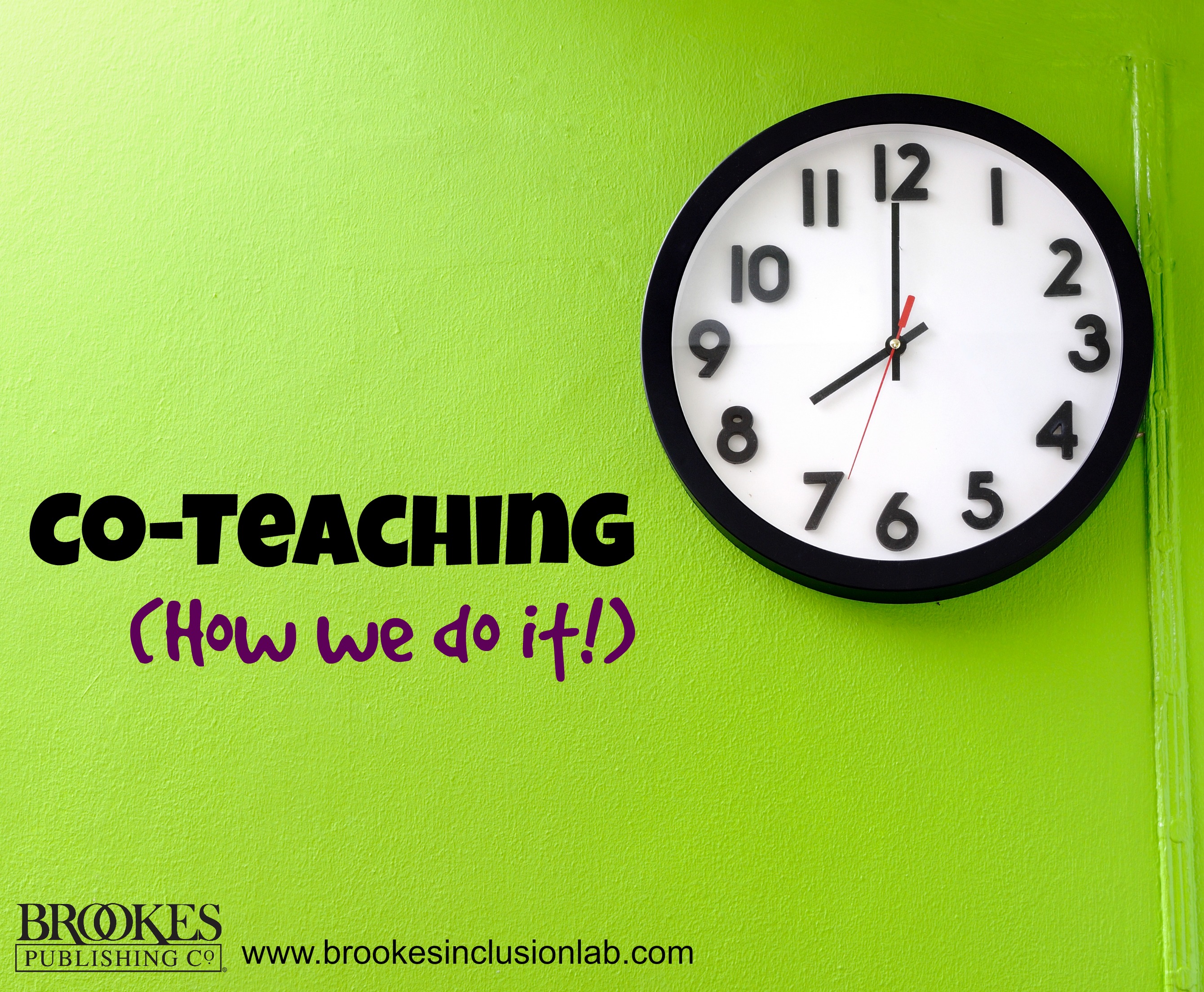Co-Teaching: How We Do It
August 30, 2016
If you’re new to co-teaching—or if you’re intrigued by the possibilities of a teaching partnership and want to see one in action—today’s post is for you. In this “Voices from the Classroom” vignette, adapted from Collaborative Teaming by Margaret King-Sears, Rachel Janney, and Martha Snell, co-teachers Julia and Michelle talk about their experience teaching a high school chemistry class together. Read on to learn about the benefits of co-teaching and some tips from real-life teachers who made it work.
***
It is a few minutes until the bell rings, and our students are clamoring in, taking their seats. One asks a question about homework, and another has a question about a lab assignment. Both get their answers right away because there are two teachers in this class—a general education chemistry teacher and a special education teacher.
Several students with specific learning disabilities or other health impairments, such as attention-deficit/Hyperactivity disorder, are included in our class. As the students get settled, we teachers talk briefly about the plan for the day, which was discussed at the end of the last class. A quick decision is made that one will check homework while the other goes over questions from the homework on the board. The bell rings, and class begins with both of us standing at the front, equal partners in teaching the lesson.
Examples of our teaming follow:
- After one of us talks, the other interjects with an afterthought or clarification.
- When we go over guided practice, one of us works up on the board getting students to actively participate while the other grades the quizzes so feedback can be given by the end of class.
- As the students work independently, both of us circulate and answer students’ questions.
- One of us provides help to students before school, and the other assists students after the school day ends.
When class ends, the two of us quickly and briefly reflect about how the day went, particularly homing in on whether, or which, students understood the material. This brief reflection enables us to make decisions about the next class and which teacher will do what during the next lesson. If there is not enough time to talk, then emails go back and forth. Our teaming involves a continuous cycle of decision making, reflection, and feedback—bouncing ideas off each other in order to come to the best possible solution.
In our first year of co-teaching, we already worked well together. Both of us had unsuccessful co-teaching experiences in the past, but that did not ruin the dream of making co-teaching work. When co-teachers are equal partners, their jobs become much easier, and all students receive the best possible education. We found that our complementary skills and knowledge—chemistry and special education—helped ensure that all students have access to the curriculum as well as the individualized support they need.
Our collaboration also allows us to come up with ideas we would not have thought of individually, such as a wacky way to teach a difficult concept or funny mnemonic devices for students to remember important details. Our personalities are slightly different as well, which allows students to “click” with one teacher better than the other.
Are we always successful? No. We realize that ensuring all students are adequately supported yet appropriately challenged is an area in which we still need to work. There are success stories, however. We’re reaching students who not only seek help and guidance but also participate and show a true interest in the class. We both truly believe that our students are successful because of the co-taught environment.
***
As Julia and Michelle’s story shows, the potential benefits of co-teaching are many: increased student engagement, easier differentiation, more efficient and effective instruction that meets the needs of diverse learners. When teachers are committed to working together as equal partners, all students benefit—and the teachers do, too!
READ MORE
Explore Collaborative Teaming, a practical teacher’s guide to co-teaching and other types of teamwork among school staff.
Read these other blog posts on co-teaching:





Write a Comment
Your email address will not be published. Required fields are marked *
Post a Comment